On May 10, Beijing time, according to foreign media reports, we can ask many incomparably grand questions about the universe. These questions directly hit the core of "what is reality" and have caused countless people to think hard in history. For example, "what is the universe?" "How big is the universe?" "Does the universe exist forever or suddenly? If so, when did it appear?"
These were once the most puzzling philosophical questions, but in the past 100 years, we have found exact and scientific answers. We already know what the universe is, that the diameter of the observable universe is about 92 billion light-years, and that the universe we know began 13.8 billion years ago, and the uncertainty of the above value is only about 1%.
But whether we measure time or distance, we use earth centered units, such as "year" and "light year". Is there a more objective and universal measurement method? The answer, of course, is "yes". As astronomer Jerry bell wrote:
"Why does the calculation of the universe use the unit of 'year'? In my opinion, 'year' is a very narrow concept. After all, the basis of the existence of 'year' (i.e. stars) has only appeared for several billion years, accounting for only one third of the current age of the universe. Even the key concept of 'light year' should be tied to this narrow measurement unit."
These points are well said, which is worth extending and Thinking on this basis and looking for alternatives. First, we need to understand the scientific principles behind the measurement of cosmic time.
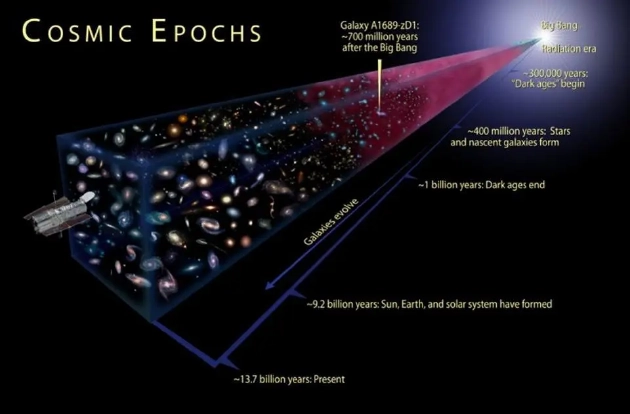
Although we can observe the universe thousands of light-years or even hundreds of millions of light-years away, it is still a kind of "geocentric" thinking to calculate the age of the universe by "years" on the earth and measure the distance of the universe by "light-years". Is this really our only and even best choice?
On earth, there are only two ways to understand the concept of the passage of time and carry out biological activities using recurring regular phenomena. On a shorter time scale, we have the concept of "day". This concept is important because a day represents sunrise and sunset, roughly corresponding to a complete rotation of the earth, and consistent with the activity and dormancy cycle of most animals and plants. These phenomena will cycle day after day.
But once you lengthen the time scale, you can see the difference between each day. For example, in a year, the time of sunrise and sunset will be gradually advanced or delayed, the length of the day will gradually increase or decrease, the height of the sun will gradually increase or decrease, the four seasons will change circularly, and the activities of animals, plants and other organisms will also change. And these phenomena will cycle back and forth in the next year, with almost no change.
In this way, it is not difficult to understand why we propose a timing system around the concepts of "day" and "year", because our life on earth is inseparable from these periodic phenomena. However, the "days" and "years" we experience on earth do not correspond well to the passage of time in the universe for many reasons.

Since the earth's orbit around the sun is elliptical, the speed of the earth will accelerate at perihelion and slow down at aphelion. Therefore, the time of sunrise and sunset will change continuously, and the length of the day will increase or decrease continuously. These laws are repeated in years.
First, the length of a day has changed significantly in the history of the earth. Under the interaction between the moon, the earth and the sun, tidal friction causes the day to become longer and longer, and the moon is farther and farther away from the earth. About 4 billion years ago, the "day" on earth was only 6 to 8 hours, and the corresponding length of a year was more than 1000 days.
However, in the history of the solar system, "year" has not changed much. A year represents the time it takes for the earth to complete one revolution around the sun. The biggest factor is the mass of the sun. So far, the sun has reduced the mass equivalent to a whole Saturn, resulting in a slightly longer distance from the earth to the sun and a slightly slower revolution. Therefore, the length of "one year" has increased, but the increase is very small, only 2 / 10000. It is equivalent to an increase of about two hours per year from the birth of the solar system to the present.
Even if there are so many complex astrophysical phenomena in the solar system, the length of a year hardly changes. Therefore, for us, "year" is the most stable benchmark for large-scale timing. Since the speed of light is a known and measurable constant, "light year" is naturally derived as a distance unit. With the passage of time, the change of light years is also very small, and the change range in billions of years is only 0.02%.
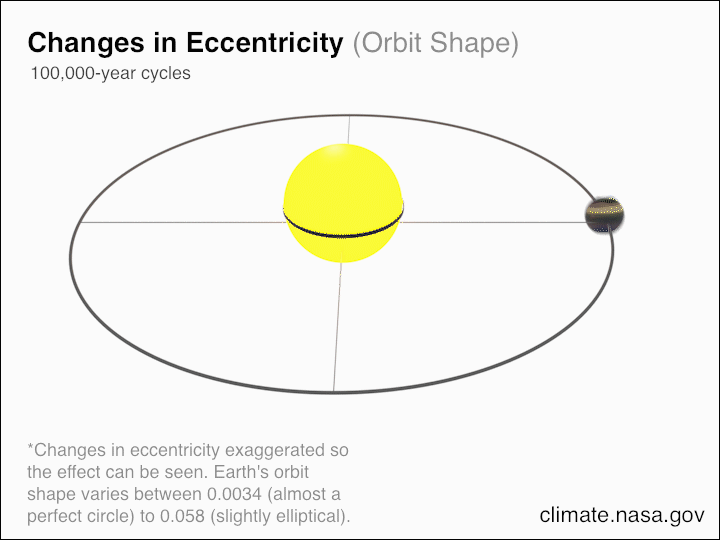
The earth's orbit is not a circle, but an ellipse. The ratio of major axis to minor axis of the track will change continuously. The time of the earth's rotation determines the length of a year, so the length of a year will change slowly.
In addition, there is another important unit, but it is indirectly defined on the basis of "year", that is, "second gap". It is based not only on time, but also on astronomy and trigonometry. As the earth revolves around the sun, the relative position between even stationary stars will change, just as you can see when your two eyes open alternately. The position of objects closer to you relative to distant background objects seems to change.
In astronomy, we call this phenomenon "parallax". The length used as a reference is not the distance between two eyes, but the maximum position difference of the earth relative to the sun, that is, the earth's orbital radius, which is about 300 million kilometers. When a celestial body moves at an angle of 1 arcsecond relative to a celestial body in a distant background, the distance between the two is defined as a 1-second gap, which is about 3.26 light-years.
But why should we forcibly extend our definition of time to the whole universe? This practice is not objective and has not yet broken away from the shackles of "geocentric" thinking. Neither day nor year should be used as the time measurement unit of the whole universe; Similarly, neither the light year nor the second gap (and the related thousand second gap, million second gap, etc.) should be used as the distance measurement unit of the whole universe.
In fact, we have found some more objective and physical ways to define time. Although they do not have all kinds of defects brought by the "geocentric theory", they also have their own problems. You can think about whether you prefer these methods or the current year based (also earth based) timing method.
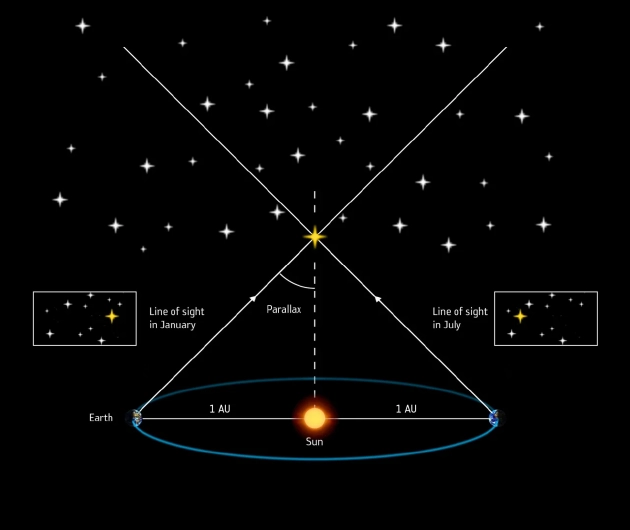
As the earth revolves around the sun, the position of stars near the earth relative to distant stars seems to change periodically. When a star's viewing angle is 1 arcsecond (i.e. 3600 times of 1 degree), its distance to the earth sun system is just 1 second, about 3.26 light-years.
1) Planck time
Is there a definition of time based entirely on the fundamental constants of the universe? The answer is "Planck time". There are three measurable basic constants in the universe: the gravitational constant G, the speed of light C, and the quantum constant h (such as the reduced Planck constant). When they are combined, a basic unit of time can be created: (G × The square root of H ÷ C5), the result is 5.4 × 10-43, any observer in the universe can draw the same conclusion.
However, this time unit applies only to very small scales. On this scale, all physical laws will fail, because quantum fluctuations on this scale will not form particle / antiparticle pairs, but black holes. No physical process can match such a small time scale. To use Planck units to describe time, even subatomic physical processes will be astronomical. For example, the subatomic particle with the shortest known lifetime is Ding quark, whose decay time is about 1018 Planck times, while the traditional "one year" will exceed 1051 Planck times. So this timing method itself has no problem, but it is too inconvenient to use.
2) Atomic clock
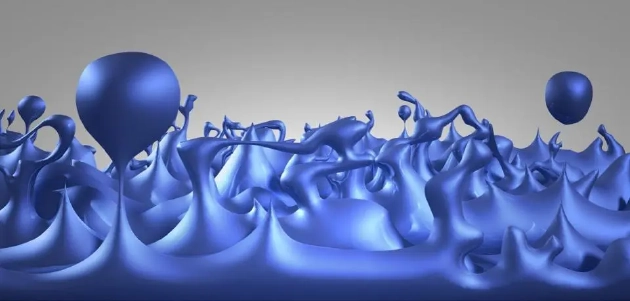
This artist's concept map depicts the foam like structure of space and time, in which the small bubble is only one hundredth of the size of the atomic nucleus. They fluctuate and are fleeting. But there is a lower limit to their volume. Once it is less than this lower limit, physics can no longer play a role. This lower limit is called the Planck scale, which is equivalent to 10-35 meters in distance and 10-43 seconds in time.
An interesting fact is that all definitions of time, mass and distance are completely determined by human beings. One second, one gram or one meter actually has no meaning. We just choose these values as the standard in our daily life. But we can relate these quantities to each other, just as we just defined Planck time with three basic constants.
In that case, can we define time and distance by atomic transition (that is, electrons fall from a higher energy level to a lower energy level and release light of a specific frequency and wavelength at the same time)? Frequency is the reciprocal of time, so "time" can be defined as the length of time required for light to propagate a wavelength, and "distance" can be defined as the length of a wavelength. This is the mechanism of atomic clock and the basis of our definition of seconds and meters.
However, this definition is still arbitrary, and most transitions occur very fast and at very short intervals, which is not suitable for daily use. For example, the modern definition of second is the time required for photons released by the hyperfine structure of cesium-133 atom to propagate 9192631770 wavelengths in vacuum. What about years and light years? With this timing method, we still get a pile of astronomical figures, which is too troublesome for most people.
3) Hubble time
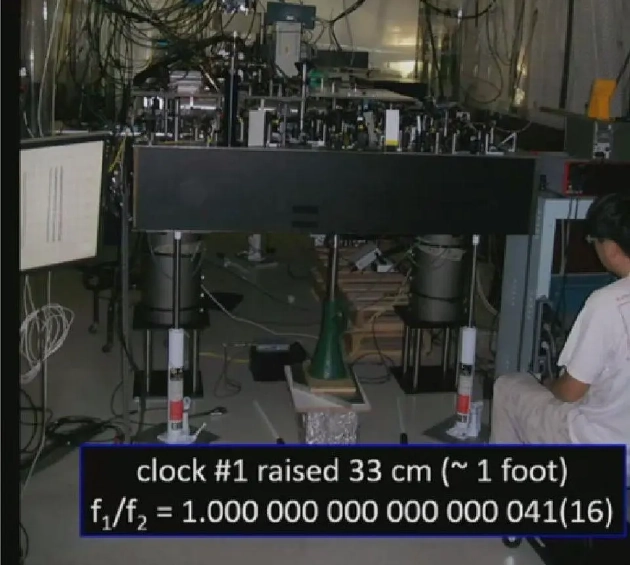
Even if the height difference between the two atomic clocks is only 33 cm, the running speed of the clocks will be significantly different. This allows us to measure not only the strength of the gravitational field, but also its gradient change, so it can be used to measure altitude / elevation. Atomic clock is based on the electronic transition in the atom. It is the most accurate timing tool for mankind at present.
Next, let's go to the other extreme, rising directly from the quantum world to the cosmic scale. The universe is expanding at a certain rate, which is generally called Hubble parameter, also known as Hubble constant. Although we usually write it in the form of "speed / distance", such as "71 km / S / MPC" (i.e. 71 km / S / million second gap), it can also be simply written as the reciprocal of time, i.e. 2.3 × 10-18s-1, and then turn it upside down, and we get a unit of "Hubble time", that is, 4.3 × 1017 seconds, roughly equal to the age since the big bang.
Multiply this time by the speed of light and you get the Hubble distance, which is about 1.3 × 1013 meters, or 13.7 billion light-years, is about 30% of the distance from the earth to the edge of the universe.
After such a calculation, the result seems ideal. The distance scale and time scale can match the real scale of the universe. But the problem is that the Hubble constant is not a real "constant". With the increasing age of the universe, this value will continue to decrease, and the mechanism behind it is very complex (depending on the relative energy density of different components of the universe). Therefore, although this timing concept is very interesting, it is not realistic, because for different observers in the universe, the time experienced since the big bang of the universe is different, and the Hubble distance and Hubble time should be adjusted accordingly.
4) Hydrogen atom spin
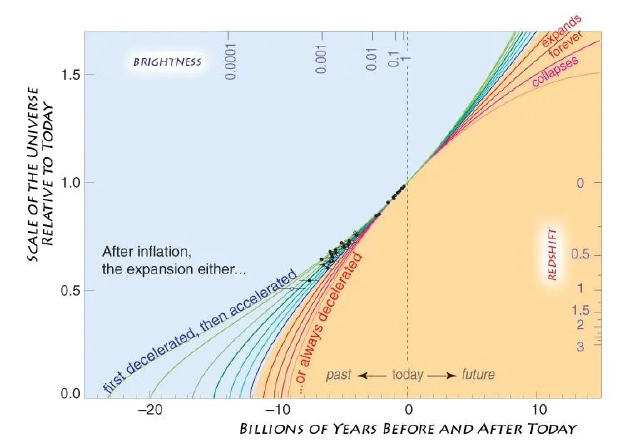
Measuring the time and distance in the past can help us predict the future evolution direction of the universe. Connecting the expansion rate with the matter and energy in the universe can get the "Hubble time" of the universe, but Hubble time is not a constant, but will change with the expansion of the universe and the passage of time.
So far, every attempt we've made doesn't seem to apply to the cosmic scale, but don't be depressed. There's another possibility worth thinking about. A neutral hydrogen atom is formed by the combination of an electron and a nucleus, which generally has only one proton. When the electron reaches the ground state, it may have two configurations relative to the proton. Either the quantum spin directions of electrons and protons are opposite, that is, they are+ ½ And- ½; Either in the same direction, i.e+ ½ Or both- ½。
If the spin direction is opposite, the electron is indeed in the lowest energy state; However, if the spin direction is the same, there is a certain probability that the rotation direction of the electron will flip and release a photon with a frequency of 1420405751.77 Hz. Through conversion, the time corresponding to this frequency is 0.7 nanoseconds, and the length is about 21 cm.

When a hydrogen atom is formed, the spin directions of electrons and protons are 50% likely to be the same and 50% opposite. On the contrary, the electron will not transition again. If they are the same, the electrons may transition to a lower energy state and release photons of a specific wavelength. The time scale of this process is quite long.
The most interesting thing is that the transition speed is actually relatively slow at the astronomical level, equivalent to 2.9 × 10-15s-1。 Converted into cosmic time and cosmic length, 10.9 million years and 1090 light-years are obtained respectively, which is about 3.3 million seconds. Among all the basic constants of nature we know, this is the most easily transformed into cosmic time scale and distance scale.
But most importantly, the definition of time we choose is arbitrary anyway. When it comes to time or distance, different definitions have no effect on our answers. As long as the time interval we define remains unchanged, these answers are essentially the same.

The picture shows the universe we can observe (yellow circle) and the universe we can reach (purplish red). It can be seen that the radius of the universe is 46.1 billion light-years. If a luminous object has been far away from the earth with the expansion of the universe in the past 13.8 billion years, if the light emitted by it wants to reach the earth just today, this radius is the upper limit of the distance between the object and the earth. But even if we can fly at the speed of light, we will never reach galaxies 18 billion light-years away. No matter what units the above distance and time are converted into, the conclusion is the same.
So, what are the differences between different time definition methods? In the final analysis, the difference lies in our ability to understand these definitions and numbers as human beings. When reading astronomical literature, you will see the time described in years and the distance described in astronomical units, second gap, kilosecond gap, million second gap, or even billion second gap, depending on whether the object described is the solar system, interstellar, intragalactic, intergalactic, or cosmic distance. But because we are human beings, we can intuitively understand the concept of "year". As long as we multiply the year by the speed of light, we can further get the concept of light year. Although this is not the only option, it is by far the most common practice. Perhaps in the future beyond our reach, mankind will break away from the shackles of the earth and fly to distant outer space. At that time, the units we use will also break away from the shackles of "geocentric theory".